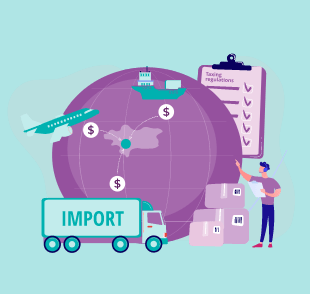
The “arm’s length” principle is the most used transfer pricing rule. This says that a transfer price should be comparable to a market transaction between two independent companies. Given the nature of related-party transactions, a range of arm’s-length prices may exist for the same transaction.
There may not even be a correct arm’s length price if there are no comparable third-party transactions, and in such cases, they may be difficult to infer. Comparable transactions may be expensive for the tax authority to observe due to information asymmetry. And because of these loopholes, multinational companies (MNCs) can sometimes work with artificially low prices on exports to low tax countries or artificially high prices for imports coming in from low tax countries in a bid to reduce their global tax liability.
Many countries implement transfer pricing regulations to mitigate revenue losses from incorrect pricing of inter-firm transfers. These regulations vary from mere acknowledgements of the arm’s length principle to detailed reports. Stringent regulations increase the cost of mispricing and are effective in curbing the extent of profit shifting in developed countries. Compliance with transfer pricing regulations is critical so companies don’t have to pay double taxes at a later stage and noncompliance can also lead to disputes with tax authorities, litigation, and substantial penalties.

This is also called the transactional net margin method (TNMM) method. This is a very commonly used method and here the net profit of a deal between related companies is compared to that of companies not related to each other. Since it only calls for financial information, it is relatively easier to use. Product manufacturers with simple deals usually find this easier to work with. But it does not consider information on both parties in the deal, and this is why many tax regulators are increasingly rejecting this method for companies dealing in complex matters such as intellectual property.
The platform must let the organization compile the company’s tax data from across the globe on one platform. With one consolidated data repository, the organization can simplify tax activities, reduce operational costs, and enhance intercompany transparency.
The platform must be able to present a full picture of company’s tax data. This allows tax teams to improve compliance. Organizations can thereby set stronger controls, enhance traceability and audit trails, and reduce the risk of audits by tax authorities.
Relying on manual processes for complex and data-intensive tasks is not only prone to errors but also opens the business up to additional risks. Data errors can lead to inaccuracies in the transfer pricing process. Automation can help increase efficiency. An advanced, automated platform can improve data reliability, ensure quick processing of large volumes of data and help analyze records to create operational reports.
Having the organization’s tax data in one place is a powerful tool. With the ability to view and handle real-time data, the organization can ensure that transfer pricing processes are accurate without having to wait until the end of the close cycle.
Organizations can explicitly define profitability ranges and include profit goals with an advanced platform. With increased visibility into data, they can adjust the transfer pricing strategy as per market environment and changing tax regulations.